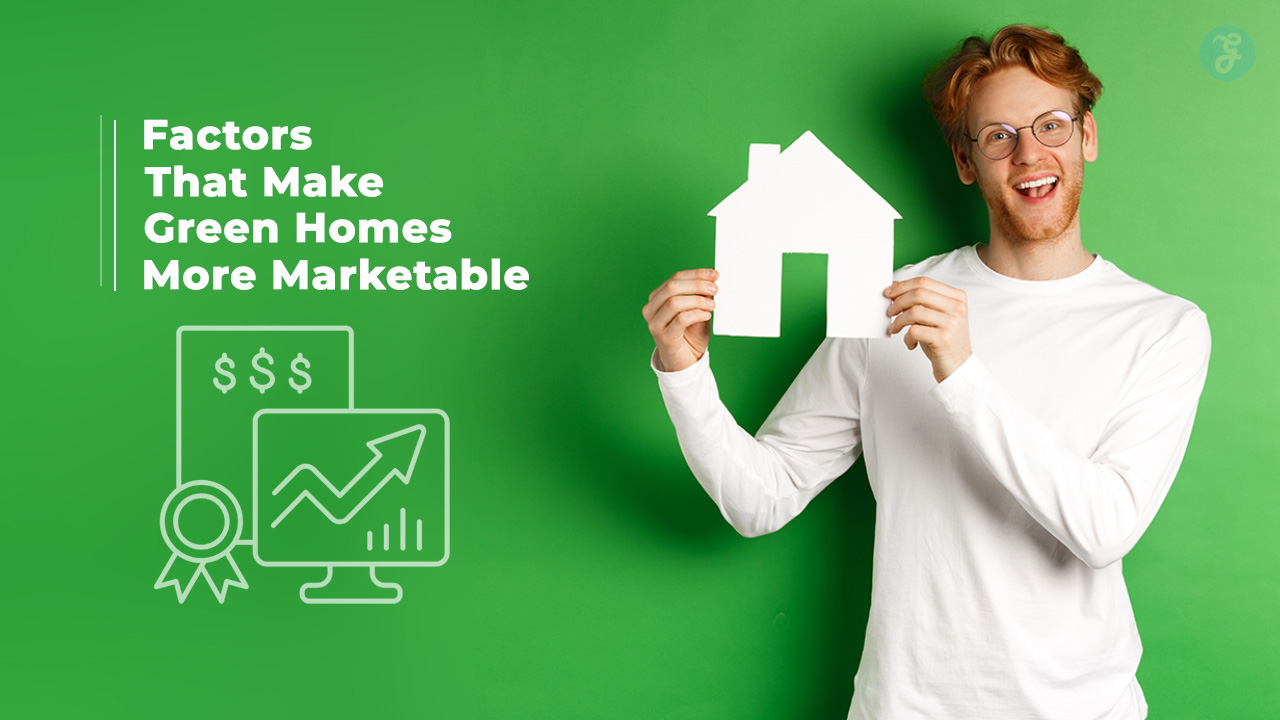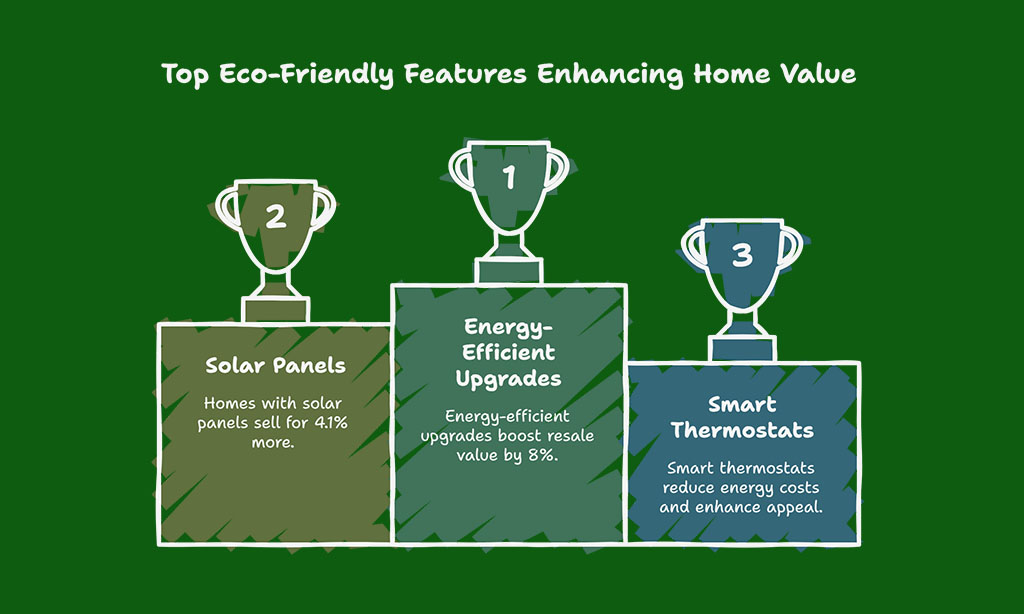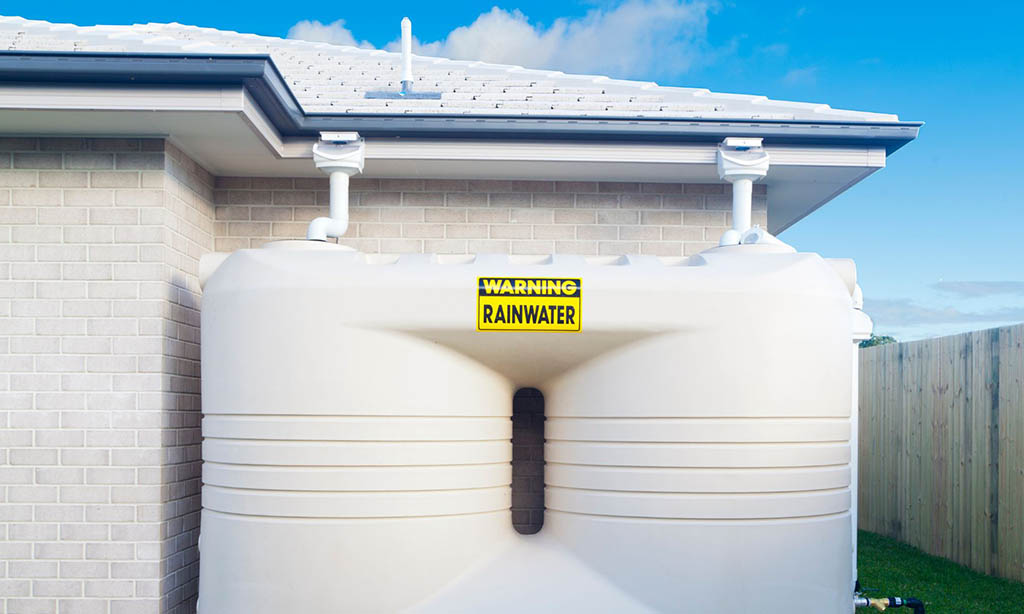As the demand for sustainable living grows, homebuyers are actively seeking eco-friendly properties that offer long-term cost savings, improved comfort, and a reduced environmental impact. Green homes are no longer a niche trend but a dominant force in the real estate market.
Buyers today are more informed and conscious about the benefits of energy efficiency, lower maintenance costs, and healthier indoor environments. This has made green homes increasingly marketable, providing homeowners and real estate investors with a competitive edge in the housing market.
In this article, we explore 12 factors that make green homes more marketable, shedding light on the essential aspects that buyers prioritize when searching for an energy-efficient, environmentally friendly home.
From renewable energy solutions to smart technology integration, we break down the key features that enhance the value and appeal of sustainable properties.
Why Green Homes Are Gaining Market Demand?
The Rising Popularity of Sustainable Living
Sustainability is no longer just a buzzword—it’s a lifestyle choice for many homeowners. Eco-conscious buyers prefer green homes because they align with their values of energy efficiency, reduced carbon footprints, and a healthier living environment.
According to a study by the National Association of Realtors (NAR), 68% of homebuyers consider energy-efficient features an important factor in their purchasing decision.
How Eco-Friendly Features Impact Home Value
Studies show that green homes sell at higher prices than traditional homes. According to the U.S. Department of Energy, homes with energy-efficient upgrades can increase resale value by up to 8%.
Buyers are willing to invest more in properties that promise long-term savings on energy costs and maintenance.
Additionally, research from Zillow suggests that homes with solar panels sell for 4.1% more than similar homes without solar power.
Buyer Preferences for Energy-Efficient Homes
Modern buyers prioritize homes that minimize their reliance on fossil fuels and reduce monthly utility bills. Features like solar panels, smart thermostats, and high-performance insulation make a property stand out in the competitive market.
A 2023 study by the International Energy Agency (IEA) found that residential energy consumption accounts for 20% of global carbon emissions, further incentivizing buyers to seek out energy-efficient homes.
12 Key Factors That Make Green Homes More Marketable
The real estate market is evolving, and green homes are becoming a top choice for modern buyers. Eco-friendly homes not only provide environmental benefits but also offer cost savings and enhanced comfort.
Whether it’s energy-efficient appliances, smart home technology, or sustainable building materials, these features make a property more attractive to prospective buyers. Below, we explore the 12 most significant factors that contribute to the growing marketability of green homes
1. Energy-Efficient Appliances and Systems
Green homes incorporate ENERGY STAR-rated appliances, which consume up to 50% less energy than standard models. Buyers are drawn to these cost-saving and environmentally responsible features.
Beyond lower electricity bills, these appliances also reduce water consumption, making them highly attractive for environmentally conscious buyers.
| Appliance | Energy Savings (%) | Additional Benefits |
| ENERGY STAR Refrigerator | 9-15% | Less food spoilage, longer lifespan |
| High-Efficiency Washer | 25% | Uses less water, reduces detergent needs |
| Smart Thermostats | 10-12% | Auto-adjusts temperature for efficiency |
Key Benefits:
- Reduced electricity and water consumption
- Lower utility bills
- Increased home efficiency and longevity
2. Solar Panels and Renewable Energy Integration
Solar energy is one of the most attractive features in a green home. Homes equipped with solar panels offer energy independence and significantly lower electricity costs.
The solar market is growing rapidly, with the Solar Energy Industries Association (SEIA) reporting a 42% increase in residential solar installations in 2023.
| Feature | Benefit |
| Tax Incentives | Up to 30% federal tax credit available |
| Energy Savings | Reduces utility bills by 50-100% |
| Home Value Increase | Adds 4.1% more to resale value |
Why Buyers Love Solar Homes:
- Lower electricity bills over time
- Tax incentives and rebates available in many regions
- Reduced carbon footprint
3. High-Performance Insulation and Windows
Proper insulation and energy-efficient windows are crucial for maintaining a home’s internal temperature, reducing heating and cooling costs by up to 30%.
The U.S. Environmental Protection Agency (EPA) estimates that proper insulation can cut annual heating and cooling costs by 15%.
| Insulation Type | Efficiency Rating | Best For |
| Spray Foam | R-value: 6.0-7.0 per inch | Attics, basements |
| Fiberglass | R-value: 2.9-3.8 per inch | Walls, ceilings |
| Cellulose | R-value: 3.2-3.8 per inch | Eco-friendly, fire-resistant option |
Essential Upgrades:
- Spray foam insulation for better air sealing
- Double or triple-pane windows with low-emissivity (Low-E) coatings
- Energy-efficient window frames to reduce heat transfer
4. Smart Home Technology for Energy Management
Smart home automation systems, such as programmable thermostats and energy-monitoring apps, make homes more efficient and desirable to tech-savvy buyers. According to a 2022 study by Coldwell Banker, 77% of millennials prefer homes with smart technology.
| Smart Feature | Benefit |
| Smart Thermostat | Adjusts temperature automatically to save energy |
| Automated Lighting | Turns off when not in use, reducing electricity bills |
| AI Energy Monitoring | Tracks and optimizes home energy usage |
Popular Smart Upgrades:
- Smart thermostats (e.g., Nest, Ecobee)
- Automated lighting systems
- AI-powered energy management apps
5. Sustainable and Non-Toxic Building Materials
Eco-conscious buyers prefer homes made from renewable, recycled, and non-toxic materials. Sustainable materials enhance indoor air quality and reduce the environmental footprint of construction.
| Material | Benefit |
| Bamboo Flooring | Rapidly renewable, durable, and stylish |
| Recycled Steel | Reduces construction waste and CO2 emissions |
| Low-VOC Paint | Improves indoor air quality, non-toxic |
Examples of Green Materials:
- Bamboo flooring
- Recycled steel and reclaimed wood
- Low-VOC (volatile organic compounds) paints
6. Water-Saving Fixtures and Landscaping
Water conservation is a major concern for homeowners, and properties with water-efficient fixtures and sustainable landscaping are increasingly in demand. Low-flow toilets, rainwater harvesting systems, and drought-resistant landscaping help reduce water bills and make homes more sustainable.
| Water-Saving Feature | Benefit |
| Low-Flow Toilets | Use up to 50% less water per flush |
| Drip Irrigation Systems | Efficient watering with minimal waste |
| Rainwater Harvesting | Collects water for reuse in gardens |
Why Buyers Prioritize Water Efficiency:
- Reduces monthly water bills
- Supports eco-friendly homeownership
- Increases property appeal in drought-prone areas
7. Indoor Air Quality and Ventilation Systems
A home’s air quality significantly affects health and comfort. Buyers prioritize homes with advanced air purification and ventilation systems, as poor indoor air can lead to respiratory issues and allergies.
| Air Quality Feature | Benefit |
| HEPA Air Filters | Remove 99.97% of airborne pollutants |
| Smart Ventilation | Adjusts airflow for better air quality |
| Humidity Control | Prevents mold and mildew growth |
Key Benefits:
- Healthier indoor environments
- Reduced allergens and pollutants
- Enhanced home comfort
8. LEED and Green Building Certifications
Certified green homes provide buyers with assurance of energy efficiency and sustainability. Certifications like LEED, ENERGY STAR, and Passive House signal high environmental standards and often lead to quicker sales and higher offers.
| Certification | Key Benefit |
| LEED | Recognized global standard for green buildings |
| ENERGY STAR | Ensures energy efficiency and cost savings |
| Passive House | Guarantees ultra-low energy consumption |
Why Certifications Matter:
- Build trust with buyers
- Increase property resale value
- Reduce long-term energy costs
9. Smart Lighting and Natural Illumination
Lighting plays a crucial role in a home’s energy efficiency and ambiance. Energy-efficient lighting and natural illumination enhance home appeal while reducing electricity costs.
| Lighting Feature | Benefit |
| LED Bulbs | Use 75% less energy than incandescent bulbs |
| Motion Sensors | Automatically turn lights off when not needed |
| Skylights | Provide natural light and reduce energy use |
How Smart Lighting Adds Value:
- Lowers energy bills
- Creates a more inviting atmosphere
- Enhances a home’s modern appeal
10. Sustainable Flooring and Interior Finishes
Sustainable flooring and eco-friendly interior finishes attract buyers who prioritize durability and environmental responsibility. Non-toxic materials also contribute to better indoor air quality.
| Flooring Type | Benefit |
| Bamboo Flooring | Renewable, durable, and stylish |
| Reclaimed Wood | Reduces deforestation and adds character |
| Cork Flooring | Soft, resilient, and sustainable |
Why Buyers Love Sustainable Interiors:
- Eco-friendly materials improve indoor air quality
- Stylish and long-lasting finishes add value
- Reduces carbon footprint of home construction
11. Efficient HVAC and Geothermal Systems
Heating and cooling efficiency is a major selling point for green homes. Modern HVAC and geothermal systems reduce energy consumption while maintaining comfort.
| HVAC Feature | Benefit |
| High-Efficiency Furnace | Uses less fuel while providing optimal heating |
| Geothermal Heat Pumps | Utilize earth’s temperature for efficient heating/cooling |
| Smart HVAC Systems | Adjust settings automatically to optimize energy use |
Key Benefits:
- Lower utility costs
- Consistent indoor temperatures
- Reduced environmental impact
12. EV Charging Stations and Sustainable Transportation Readiness
With the rise of electric vehicles (EVs), homebuyers are increasingly looking for properties equipped with EV charging stations. Installing an EV charger future-proofs a home and adds to its marketability.
| EV Charging Feature | Benefit |
| Level 2 Home Charger | Faster charging for daily use |
| Solar-Powered Charging | Reduces electricity costs |
| Smart Charging Integration | Optimizes energy use for vehicle charging |
Why This Matters for Buyers:
- Supports a sustainable lifestyle
- Increases home resale value
- Prepares homes for future transportation trends
How to Increase the Marketability of a Green Home?
Highlight green upgrades during home showings. Use smart displays to demonstrate energy savings and environmental benefits.
Marketing Strategies for Selling Green Homes
- List green certifications in real estate listings
- Use high-quality photos of sustainable features
- Educate buyers on potential cost savings
Leveraging Green Certifications for Better Pricing
Homeowners should emphasize certifications like LEED and ENERGY STAR when negotiating prices to justify higher valuations.
Final Thoughts on Green Homes and Marketability
Green homes are not just a trend—they are the future of real estate. With increasing buyer demand for sustainability, properties with eco-friendly features sell faster and at higher prices. Homeowners and real estate agents who understand the 12 factors that make green homes more marketable can position these properties for success in today’s competitive market.
By embracing energy efficiency, sustainable materials, and smart technology, sellers can maximize home value while contributing to a greener planet.










































